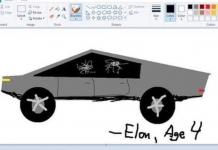Most gadgets we know today, like phones and remote controllers need energy, but now, researchers have found a way for these gadgets to function without power.
In current times, one of the biggest problems with having portable gadgets and technology is that they can easily run out of juice, Modern smartphones and tablets now can offer their users around a day’s worth of usage before running out and rendering themselves unusable (until you hightail to the nearest charger, that is). Battery life also remains one of the most important factors that consumers consider when buying a piece of tech, that, and if the gadgets are rechargeable, as to avoid the costly fees of buying new batteries. However now, researchers have discovered a way for some tech to function minus a power source.
Of the biggest battery-sucks that drain our phones, sensors are right up there. From temp sensors, to wireless sensors to those than connect to the cell tower and give your phone service, these all require some serious power to work. In comes ‘ambient backscatter’, a new communication technique from the University of Washington that uses existing radio waves (those already transmitted from Wi-Fi, TV and cell networks) to ‘bounce’ messages between devices.
Somewhat comparable to Morse code, the searchers say that ambient backscatter, using a small device (pictured above), allows for the transmission of small amounts of data across short distances, with the current average for the creation being 1 kilobit per second, over 2.5 feet outdoors (1.5 indoors). Estimates say that ambient backscatter would likely be able to transfer something as small as a text message quite easily, whereas anything more taxing, such as a download or the loading of a website, would be out of its capability.
Ambient backscatter could very well be quite useful for things like in-house communication, or notifications, and would be very good for businesses looking to update their employees on the fly (provided that they all inhabit the same location). Either way, ambient backscatter seems very interesting and the potential for it to be employed, as energy costs are increased, is huge.
Watch a video explaining ambient backscatter even more below.
We’ll keep you posted once we know more.
Source: gigaom, University of Washington
Read more on walyou, Smartphone Controlled WiFi Enabled LED Light Bulbs, Asus Waveface Ultra: The OLED Smartphone Bracelet











